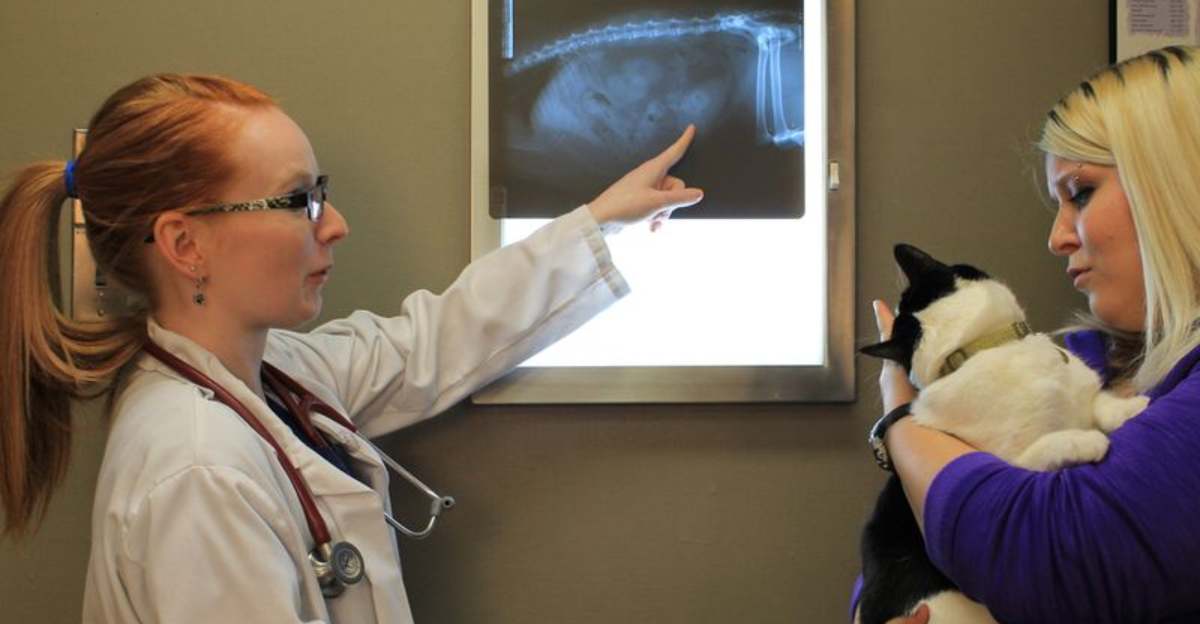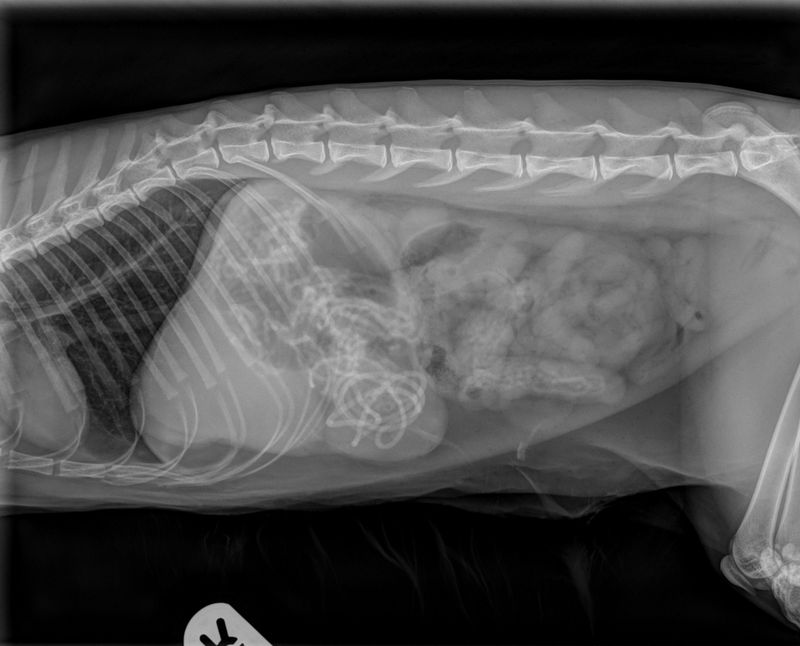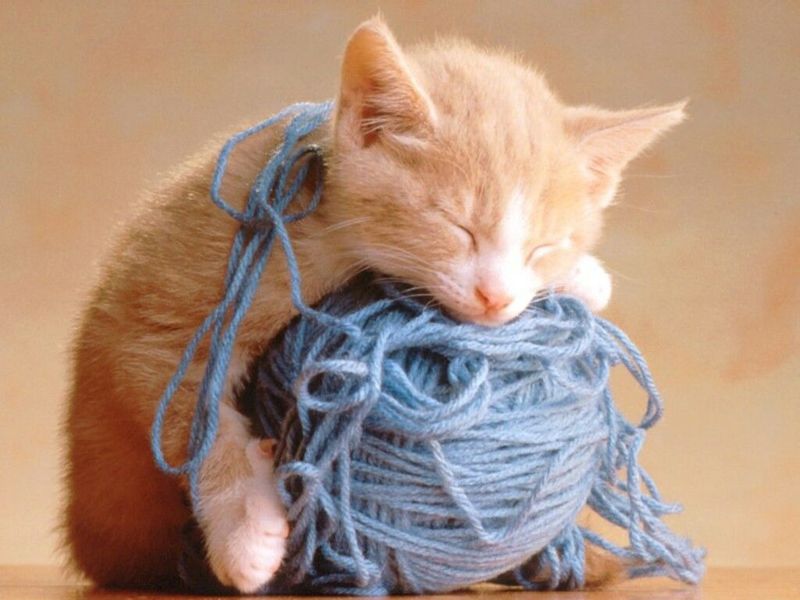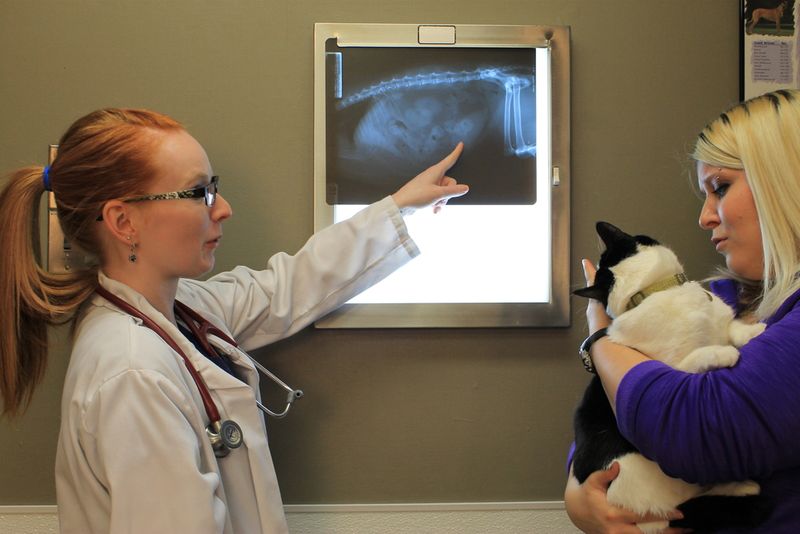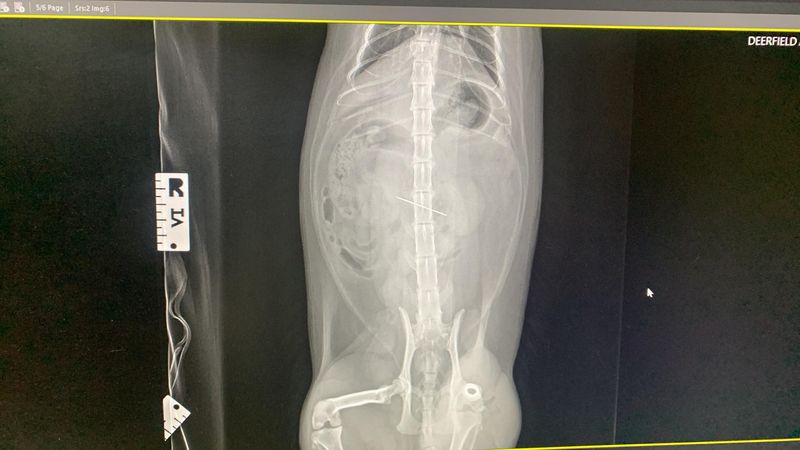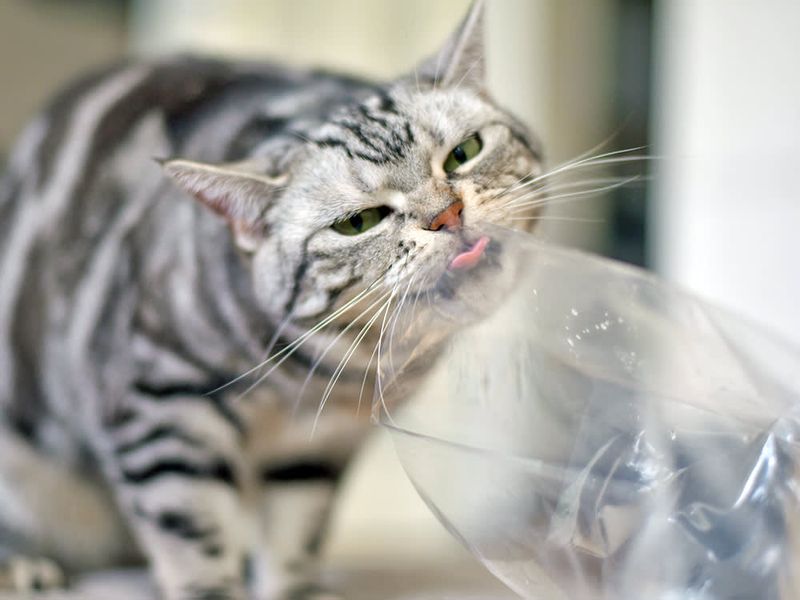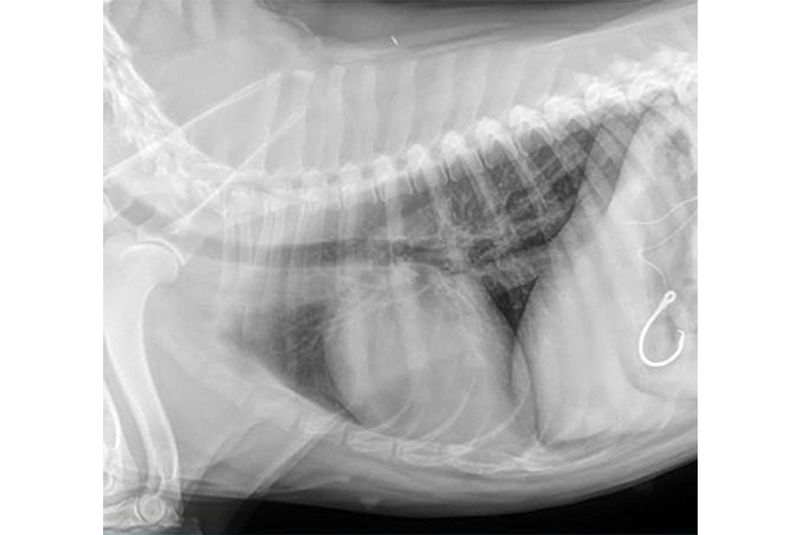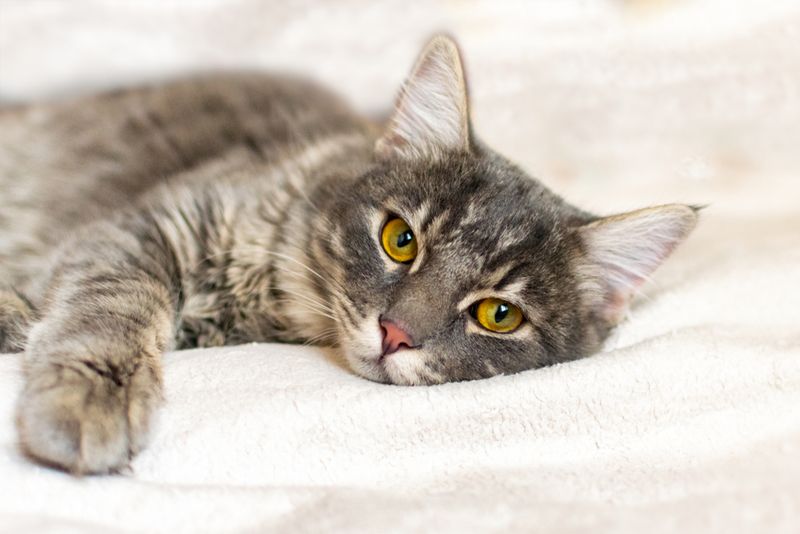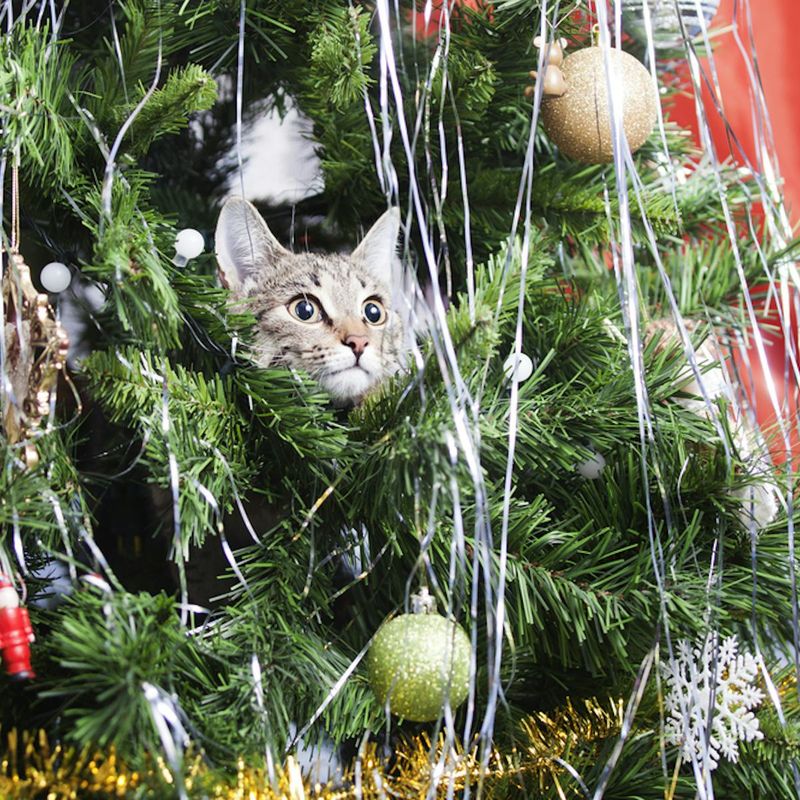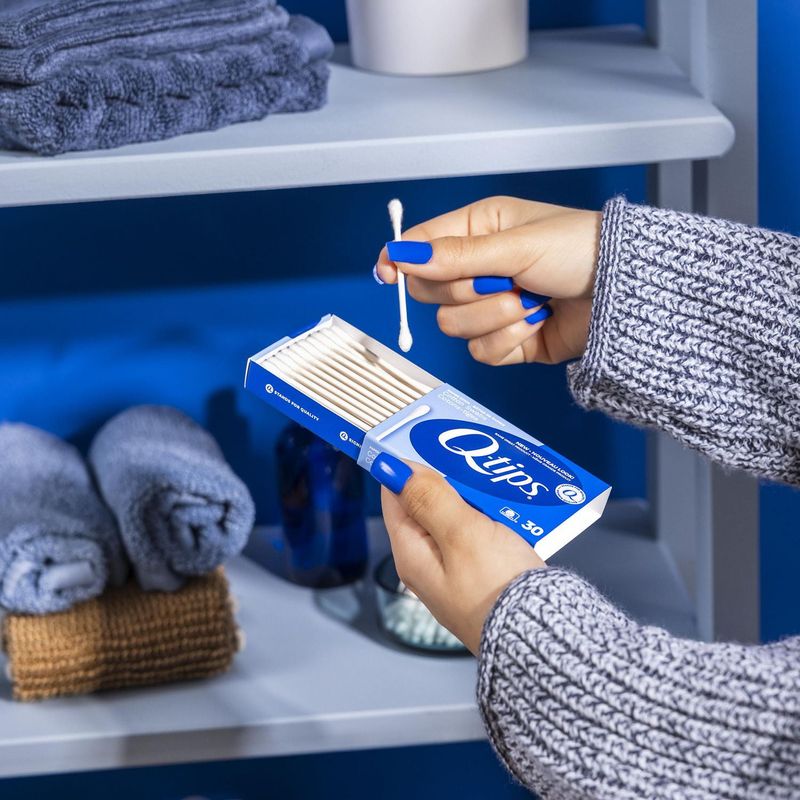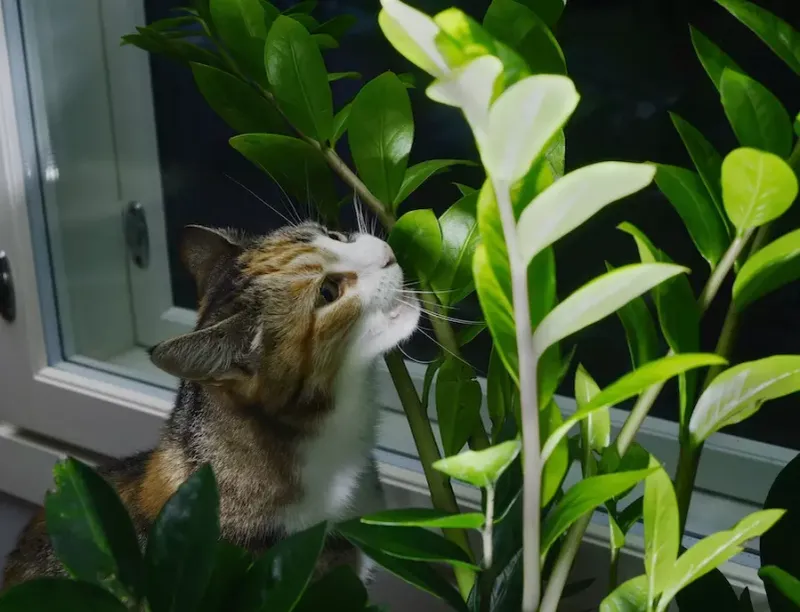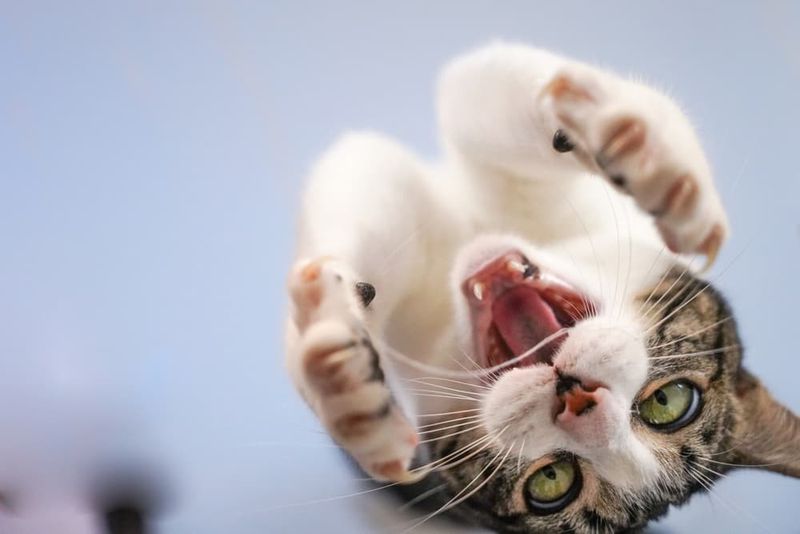📖 Table of Content:
- 1. Hair Ties
- 2. String or Yarn
- 3. Rubber Bands
- 4. Sewing Needles and Thread
- 5. Coins
- 6. Plastic Packaging or Wrappers
- 7. Fish Hooks
- 8. Bones (especially cooked)
- 9. Tinsel or Holiday Decorations
- 10. Tiny Toys or Game Pieces (like LEGO or dice)
- 11. Cotton Swabs (Q-Tips)
- 12. Plants like Lilies
- 13. Dental Floss
hile their antics can be entertaining, they sometimes lead to dangerous situations—especially when everyday household items become accidental chew toys or snacks. Veterinarians frequently rely on X-rays to uncover the surprising, and sometimes alarming, objects hidden in a cat’s digestive system.
Many of the items that show up in feline X-rays are things we would never expect a pet to swallow. From sparkly decorations to seemingly harmless strings, these everyday objects can cause serious health risks, ranging from digestive blockages to internal injuries. What makes it even more concerning is that cats often don’t show immediate signs of distress, so by the time symptoms appear, the problem could already be severe.
To help protect your furry friend, here’s a list of 14 common household objects that have been found in cats through X-rays. These are more than just stories—they’re real reminders that a little prevention can go a long way. Whether you’re a new cat parent or a seasoned feline fan, being aware of these dangers is essential to keeping your companion safe and healthy.
1. Hair Ties
Playful behavior often leads cats to flick hair ties across the floor before deciding they look like tasty treats. Once swallowed, these stretchy loops can lodge in the stomach or intestines, creating dangerous blockages. Not all cats will immediately show symptoms, which makes this hazard particularly sneaky. One or two might pass through, but repeated ingestion can result in serious complications. Many veterinarians report seeing multiple ties in a single X-ray. Even if your cat has passed one before, it doesn’t guarantee safety next time. It’s always best to keep hair ties tucked away and out of reach.
2. String or Yarn
Thin, colorful strands of yarn are irresistible to a playful cat, especially when they move unpredictably. However, once swallowed, string can cause “linear foreign body” complications that anchor to the tongue or intestines. This leads to painful bunching of the intestines, a condition that often requires surgical intervention. Cat owners frequently underestimate how dangerous a simple string can be. X-rays may reveal a trail of material winding through the digestive tract. Clinical signs can be subtle at first—reduced appetite or mild vomiting. Never leave unattended balls of yarn or string out in the open.
3. Rubber Bands
Cats are drawn to rubber bands because of their bounce and chewable texture. While they might seem like fun, these items are non-digestible and can get stuck in the gastrointestinal tract. Once inside the stomach, rubber bands may coil and obstruct normal digestion. In some cases, multiple bands accumulate without immediate symptoms. Over time, they may cause vomiting, lethargy, or severe constipation. X-rays can reveal their tangled presence, especially when the bands are bunched together. Store them in drawers or containers with tight lids to avoid accidental ingestion.
4. Sewing Needles and Thread
The deadly duo of a sharp needle attached to thread is a nightmare scenario for any cat owner. Cats are often attracted to the string, dragging the needle along with it into their mouths. Ingested needles can puncture vital organs like the esophagus or intestines, leading to internal bleeding. X-rays clearly show the metallic needle and sometimes the thread trailing through the digestive tract. Symptoms may include drooling, gagging, or an inability to swallow. Time is of the essence—prompt veterinary care can prevent fatal outcomes. Always store needles and sewing kits in sealed containers.
5. Coins
Shiny and small, coins catch the attention of many cats as toys to bat and bite. The ingestion of coins poses not just a choking hazard but potential metal toxicity, especially from pennies containing zinc. Inside the body, they can block the intestines or irritate the stomach lining. X-rays typically reveal them stacked or resting in the stomach like tiny discs. Some cats may show symptoms like vomiting or restlessness, while others appear fine until serious damage occurs. Pennies, in particular, are often removed surgically due to their toxicity. Avoid letting loose change linger on floors or counters.
6. Plastic Packaging or Wrappers
Crumpled plastic with lingering food scents becomes a tempting chew target for cats. While tearing through packaging, some cats swallow small fragments without their owners noticing. These materials do not break down in the digestive tract, leading to blockages or irritation. X-rays can detect larger pieces, though sometimes further imaging or surgery is needed for confirmation. Ingested plastic can result in vomiting, dehydration, and disinterest in food. It’s surprisingly common for cats to eat packaging from meat or fish products. Keep trash bins sealed and clean up food wrappers immediately.
7. Fish Hooks
Few objects are as dangerous to cats as fish hooks, which can lodge in the mouth, throat, or stomach. Their scent and shape make them enticing, particularly when bait is still attached. Once swallowed, the barbed hook embeds into tissue and resists removal. X-rays display the sharp contours and barbs with chilling clarity. Immediate veterinary intervention is required to prevent internal tearing. Fish hooks are common in coastal homes or among hobbyist anglers. Store all fishing gear in a closed tackle box well out of reach.
8. Bones (especially cooked)
Cooked bones are brittle and prone to splintering, turning into internal shrapnel when swallowed. While raw bones may be safer in limited cases, cooked ones pose a serious threat to cats. Splinters can puncture or scrape internal organs, causing severe pain and bleeding. Often, cats pick them out of trash cans or off dinner plates when unsupervised. X-rays sometimes reveal fragments, though not all bone pieces are visible. Signs of ingestion may include whining, pawing at the mouth, or constipation. Always discard bones securely and avoid offering them as treats.
9. Tinsel or Holiday Decorations
Sparkling and dangling decorations draw cats in during festive seasons. Tinsel, in particular, is easy to swallow and can result in linear blockages similar to string. Many emergency vet visits spike around holidays due to this risk. Once inside, tinsel threads can slice the intestines like a wire. X-rays may show unusual patterns or clumping of foreign material. Your cat might begin vomiting or appear unusually quiet if complications occur. Keep decorations cat-safe or hang them high and securely.
10. Tiny Toys or Game Pieces (like LEGO or dice)
Small household toys often end up under furniture—prime exploration zones for curious cats. These items are just the right size to be swallowed and cause intestinal obstruction. Because of their density, most show up clearly on X-rays as sharp-edged shapes. Cats may be attracted to the texture or movement when batting them around. Once swallowed, these objects can halt digestion and trigger pain or bloating. Game nights should end with a full cleanup to avoid unintended ingestion. Encourage family members to keep small toys out of pet areas.
11. Cotton Swabs (Q-Tips)
Some cats love the scent of used cotton swabs and will dig through trash to find them. Once ingested, the stick portion may remain intact and become lodged in the digestive tract. While it may pass in rare cases, it usually causes discomfort or even perforation. X-rays can detect the plastic rod but may miss the cotton tips. Symptoms include gagging, vomiting, or loss of appetite. Even sealed bathroom trash cans can be vulnerable if not weighted or lidded. Proper disposal is crucial to avoid unnecessary risks.
12. Plants like Lilies
Certain plants, especially lilies, are extremely toxic to cats, even in small amounts. While not a typical “object” seen in X-rays, plant material may be present if ingestion is suspected. Lilies cause rapid kidney failure, often within 24 to 72 hours. Vomiting, drooling, and lethargy are common first signs. X-rays are sometimes used to rule out other causes of sudden illness. Every part of the lily—petal, pollen, leaf—is dangerous. Avoid keeping lilies in the house altogether if you share your space with a feline.
13. Dental Floss
Long, silky, and often flavored, dental floss is a hidden threat lurking in bathroom bins. When swallowed, it can wrap around the tongue or intestines and saw through soft tissue. Like other stringy items, it causes linear obstructions that are hard to detect early. X-rays may indicate abnormal gas patterns or kinking of the intestines. Many cats appear normal until severe symptoms manifest. Post-surgical recovery can be difficult depending on the extent of internal damage. Always tie off floss before discarding and use covered trash cans in bathrooms.
